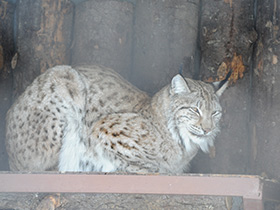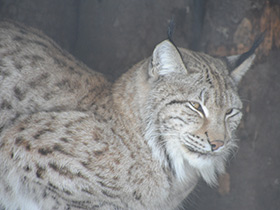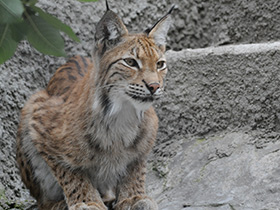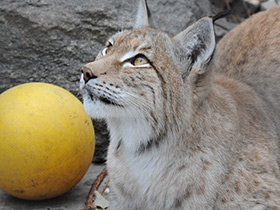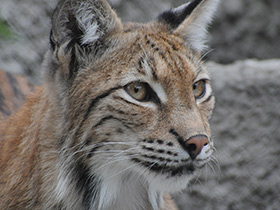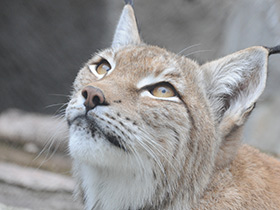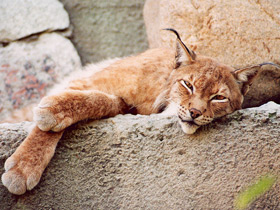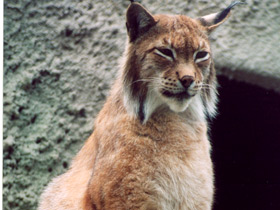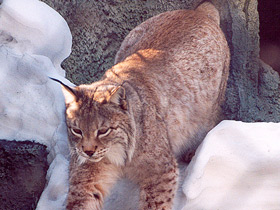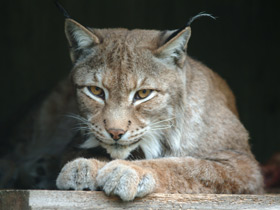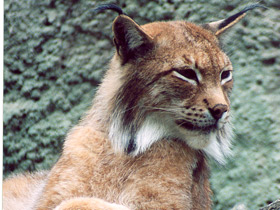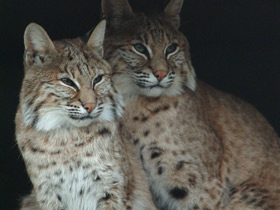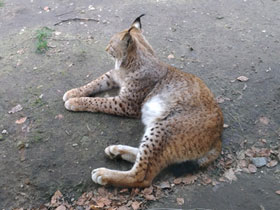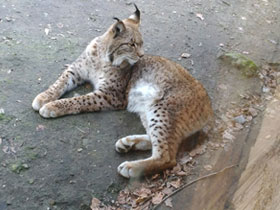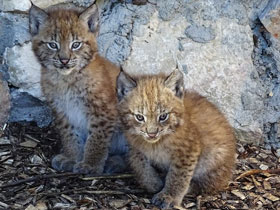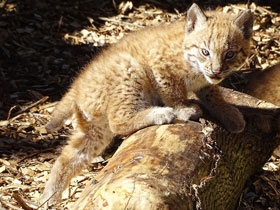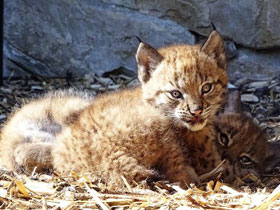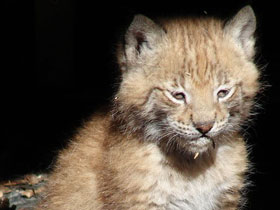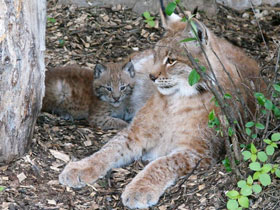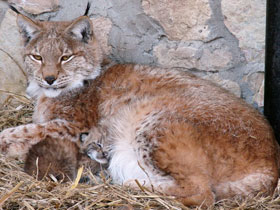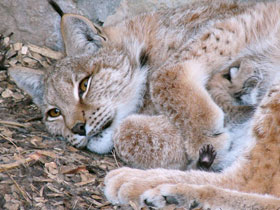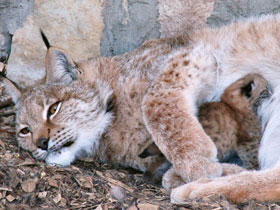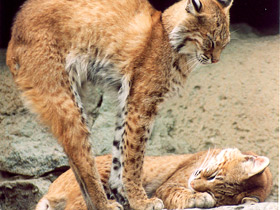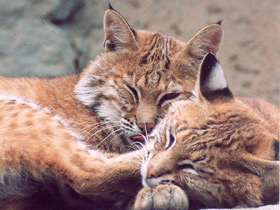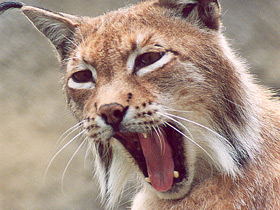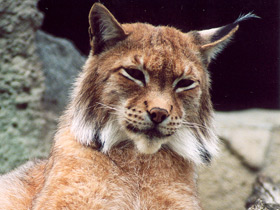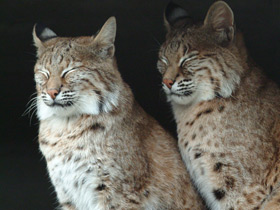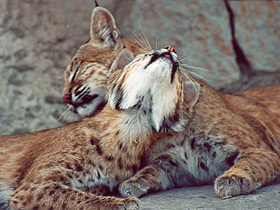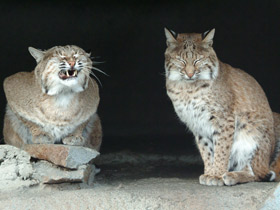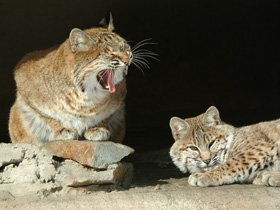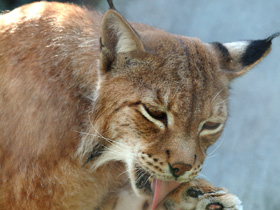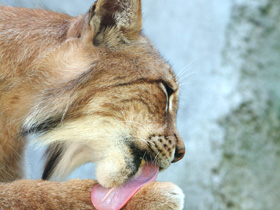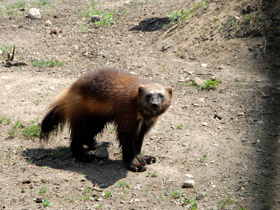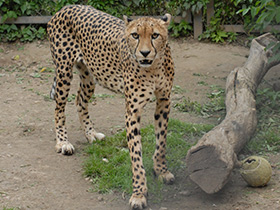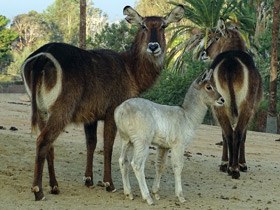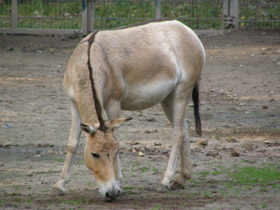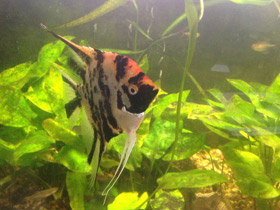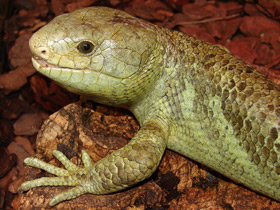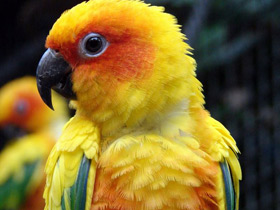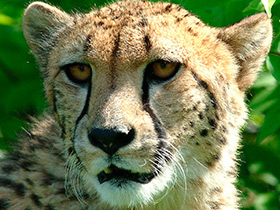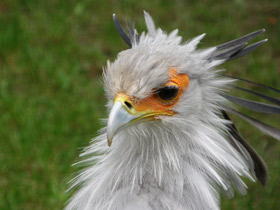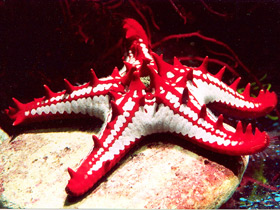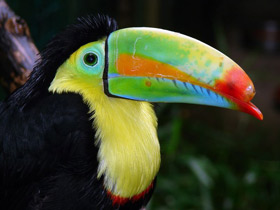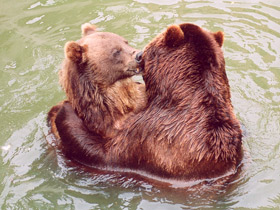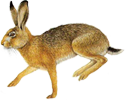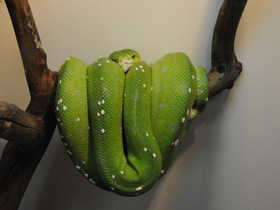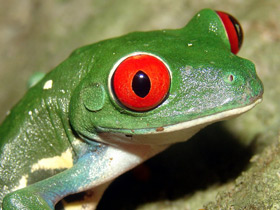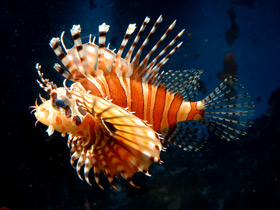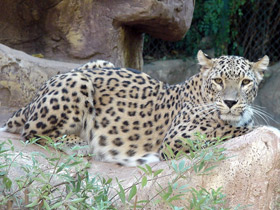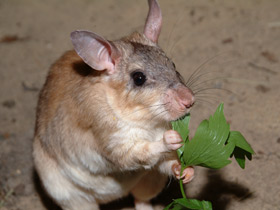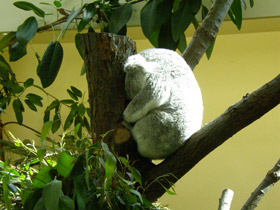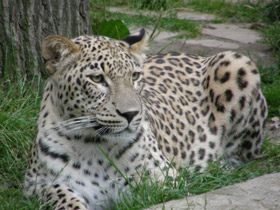The Balkan lynx (Lynx lynx balcanicus)
Balkan lynx видео
 The Balkan lynx (Lynx lynx balcanicus) is included in the IUCN Red List as "Critically Endangered"
The Balkan lynx (Lynx lynx balcanicus) is included in the IUCN Red List as "Critically Endangered"
The Balkan lynx (Lynx lynx balcanicus) is a subspecies of the Eurasian lynx in the genus Lynx.
Habitat and description
The Balkan lynx (Lynx lynx balcanicus) is the northernmost cat species, in Scandinavia it can even be found above the Arctic Circle. No other cat is so well adapted to snow and cold.
The lynx has a dense, strong and visibly shortened body, and its long, broad, well pubescent paws allow it to walk on snow without falling.
The soft, thick fur of this northern cat is an excellent protection against low temperatures. The lynx has two unique peculiarities: a short tail, as if it were cut off, 10 to 20 cm, and long tassels on the large pointed ears (photo 1, 2).
Of course, its size is smaller than that of the big cats (its body length usually does not exceed one metre and its weight is only 15-20 kg), but the European Lynx is also a dangerous predator.
It has well-developed eyesight, hearing and sense of smell, and the lynx is also very agile and hardy: it climbs trees and rocks perfectly, runs fast, jumps 3.5-4 m, goes on long walks and swims well.
Nutrition
The European lynx is a highly specialised predator. During autumn and winter, it feeds mainly on hares and roe deer (sometimes up to 70%); at other times, it also hunts musk deer, various birds (grouse and red grouse) and rodents, and sometimes catches young deer, wild boar and even elk. When hunting in deep snow and on glaciers, the lynx may encounter large adult animals, but occasionally takes squirrels, martens, martens, foxes, raccoon dogs and foxes.
This feline usually hunts at dusk. Contrary to common belief, the lynx never jumps on its prey from a tree, but prefers to follow its trail for hours and sometimes even days, hiding somewhere with good visibility. Thanks to its camouflage colouration and total immobility it is very difficult to detect, but thanks to its very acute hearing and amazing eyesight it will detect its prey even from a distance. Its strikes are quick and almost always accurate, and a fight, even with large animals, does not last long: its teeth and claws are large and very sharp.
Reproduction
During the breeding season, males fight fiercely, and later (according to some reports) help to feed and suckle their young, which is rare in cats.
Females establish a den in a remote part of the forest and carefully line it with feathers, fur and grass. After 63-70 days of gestation, 2-3 (very rarely 1 or 4) blind or deaf lynxes are born there. Their eyes open at 16-17 days and after one month they begin to eat solid food, but continue to feed on their mother's milk for another four months.
At one and a half months, lynxes are already trying to sneak up on their "prey" and attack it. They grow rapidly and in winter reach a weight of 9-14 kg (F.3, 4, 5, 6). The brood stays together all winter and the young learn to hunt together with their mother. They only become fully independent at the beginning of the new season.
The following species have been described:
- Lynx canadensis - Canada lynx;
- Lynx lynx - boreal or Eurasian lynx;
- Lynx pardinus – Iberian lynx;
- Lynx rufus – bobcat.
Subspecies:
- Altai lynx (Lynx lynx wardi);
- Amur lynx (Lynx lynx stroganovi);
- Baikal lynx (Lynx lynx kozlovi);
- Balkan lynx (Lynx lynx balcanicus);
- Eastern Siberian lynx (Lynx lynx wrangeli);
- European lynx (Lynx lynx lynx lynx);
- Caucasian lynx (Lynx lynx dinniki);
- Carpathian lynx (Lynx lynx carpathica);
- Sardinian lynx (Lynx lynx sardiniae);
- Turkestan lynx (Lynx lynx isabellinus).
Threats
The most serious threats to the Balkan lynx are the low population size, habitat degradation, and poaching. Poaching affects the Balkan lynxes both directly and indirectly. Hunters that hunt the small wildlife and game indirectly harm the Balkan lynxes by restricting their source of food, such as roe deer, chamois, and hares. It is illegal to hunt Balkan lynxes but there has been evidence that there is a market for Balkan lynx fur. Also, some stuffed lynxes are seen as decorations in some restaurants in the countryside of Albania and North Macedonia.
Tourists resorts and recreational activities have little to no effects on the population, whereas sport hunting and ski resorts can disturb the population within the national parks, where the majority of the Balkan lynxes habitat. The degradation of habitat is primarily in Albania, where logging has taken its toll on the environment and negatively affects the Balkan lynx. Albania's forests have been recovering from over exploitation since the 1800s. Although it is illegal to continue logging in the protected Balkan lynx habitat, it is still done and can potentially destroy the only habitat the Balkan lynx has.
Because they have such low population density, it is difficult for mature adults to mate with each other. The population is separated into two different sub-populations in Albania and North Macedonia, further hindering the mating process, although both populations were confirmed to be stabilized by the Balkan Lynx Recovery Programme. There is a slight worry with the expansion of the native Carpathian and reintroduced Dinaric lynx population that may threaten the genetic integrity of the Balkan lynx population. Public attitudes towards the Balkan lynx were also gauged through social science studies, indicating that they are mostly positive, although not very well known and have many misconceptions about its size, behavior, and ecology.
This mating process will be further hindered by a complete separation of the two populations in Macedonia and Albania due to the construction of the Skavica Hydroelectric power plant. The area of the planned dam is used as the main migration corridor by the Balkan lynx between these two populations.
Conservation
The Balkan lynx is considered a critically endangered subspecies by the International Union for Conservation of Nature (IUCN) and is the highest risk category for endangered species. The Balkan lynx is also protected under the Convention for International Trade of Endangered Species (CITIES) by Appendix II, the Bern Convention by Appendix III, the EU Habitats and Species Directive by Annexes II and IV, as well as all range countries.









